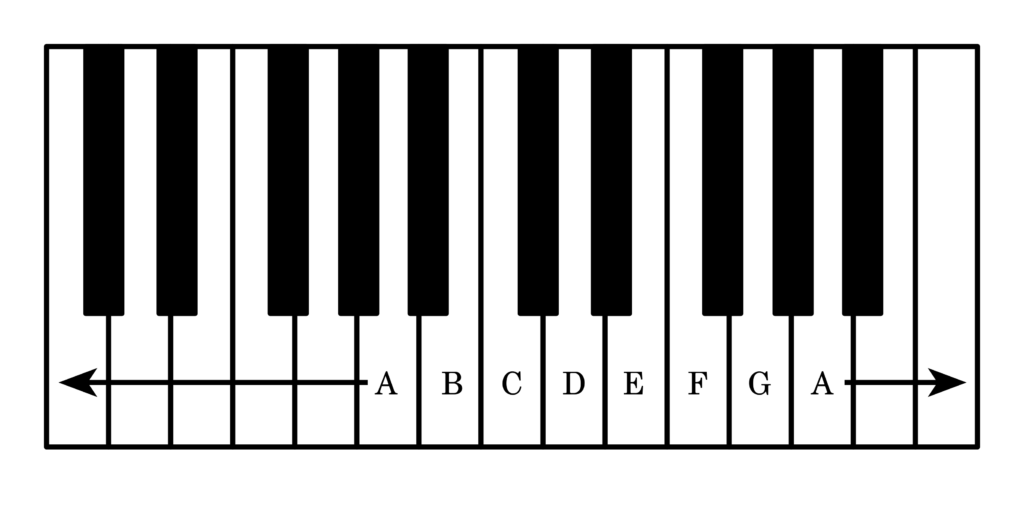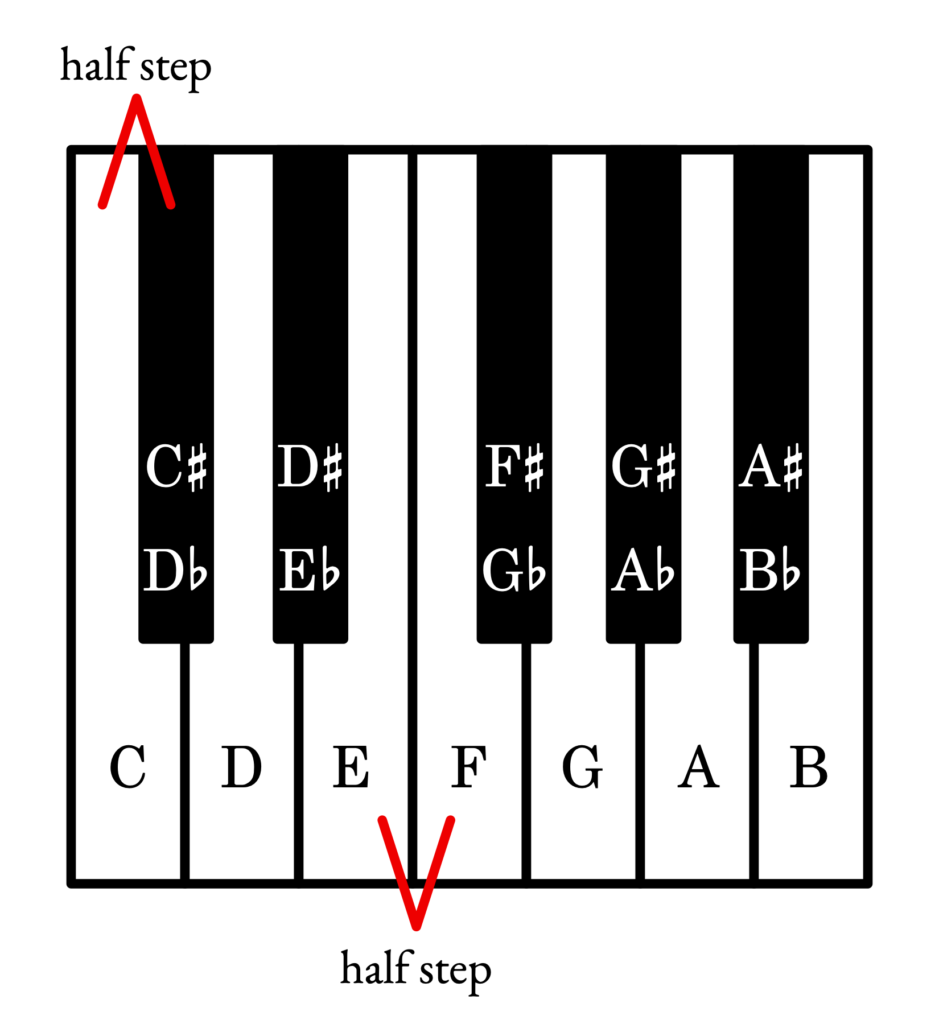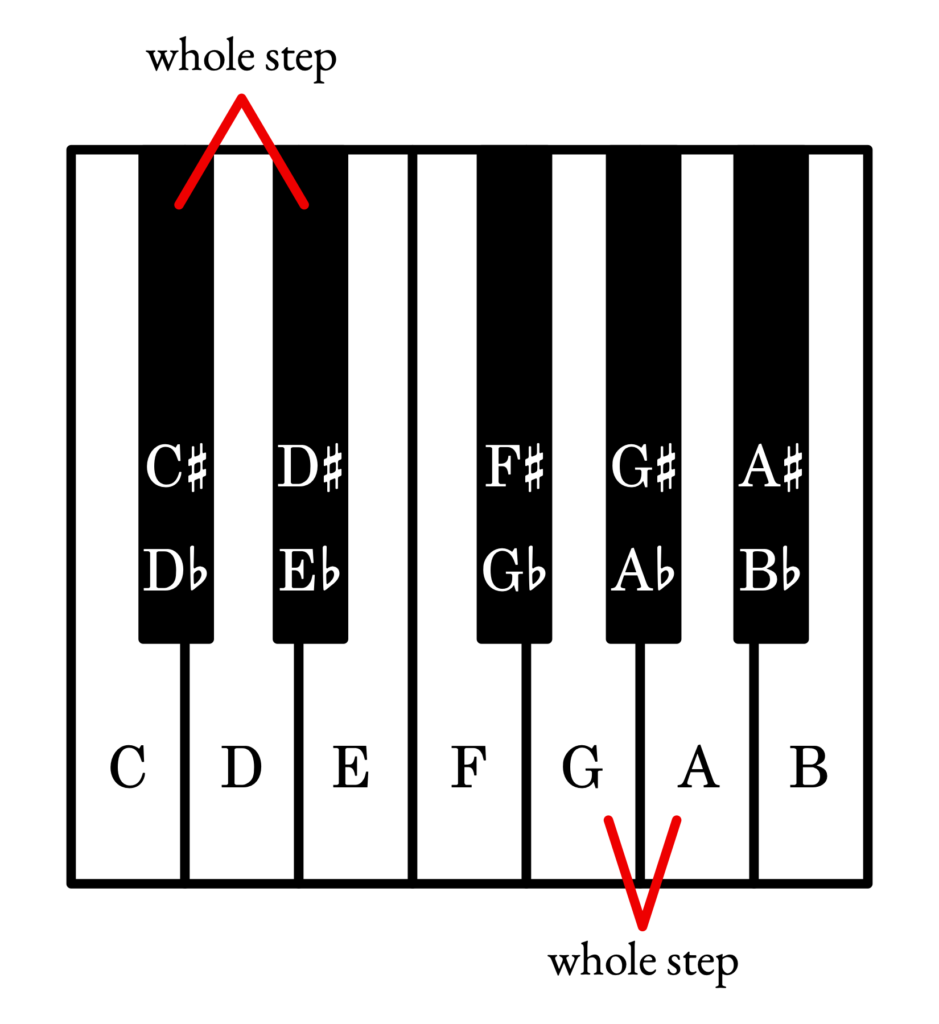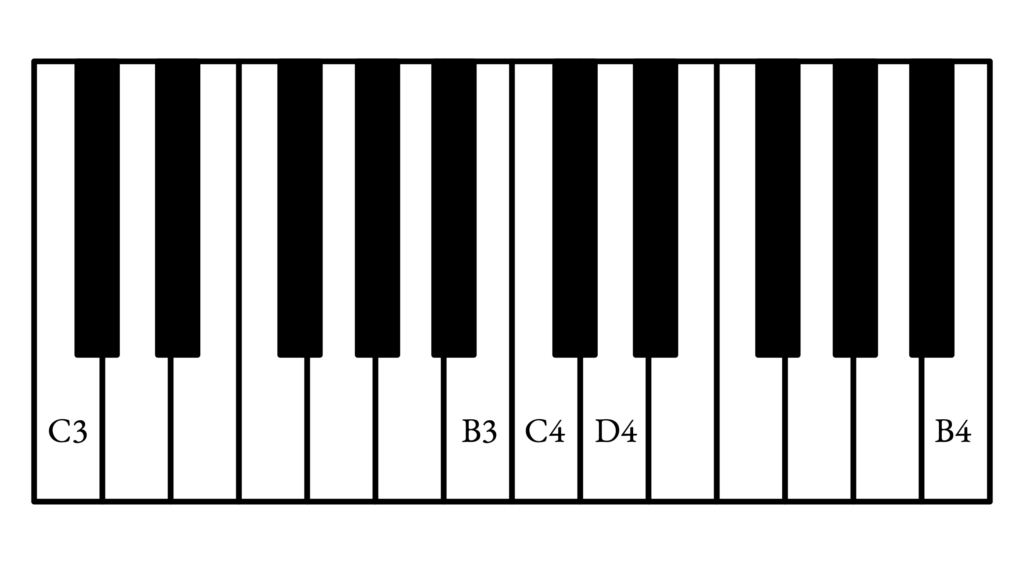In music, we use the term ‘pitch’ to talk about the highness or lowness of a sound. In Western music notation, we typically identify pitches using the first seven letters of the alphabet: A, B, C, D, E, F, and G. After G, the sequence starts over at letter A. These correspond to the white keys on the piano. This sequence repeats indefinitely in both directions. As we go further left on the keyboard, the pitches sound lower; as we go right, the pitches sound higher. The distance from one key to the next closest key with the same letter name higher or lower is an octave.

In order to label the black keys, we need to employ accidentals, symbols used to raise or lower a pitch by a half step. A sharp (♯) raises a pitch by a half step whereas a flat (♭) lowers a pitch by a half step. A half step (semitone) is the distance from one key to the adjacent key above or below it. There are two kinds of half steps: diatonic and chromatic. A diatonic half step occurs between two keys that have different letter names, such as C and D♭. A chromatic half step occurs between two keys that have the same letter name, such as C and C♯. When two pitches sound the same but are spelt differently (e.g. C♯ and D♭), they are said to be enharmonic equivalents.
In Example 2 below, the black key between C and D could be called C♯ because it is one half step above C or D♭ because it is one half step below D. Likewise, the black key between D and E could be called D♯ or E♭. A half step can also occur between two white keys, such as E and F.

The distance between two keys that are two half steps apart is known as a whole step (whole tone). In Example 3 below, the distance between D♭ and E♭ is a whole step. Likewise, the distance from G to A is also a whole step. It is important to note that whole steps must be spelt using adjacent letters in the alphabet. For example, C♯ to E♭ would not be considered a whole step.

The piano has a total of 88 keys. In order to identify a specific key, we need to include an octave designation along with its letter name. The lowest C on the piano is labeled C1. The next highest C is C2 and so on.

The C nearest to the middle of the keyboard (C4) is also known as “middle C”. The three keys below C1 are A0, A♯0 (B♭0), and B0. All of the keys from one C up to the next C are said to be in the same octave. Thus, the lowest note in any given octave is a C and the highest a B. In Example 5 below, the white key above C4 is D4 while the white key below it is B3.
